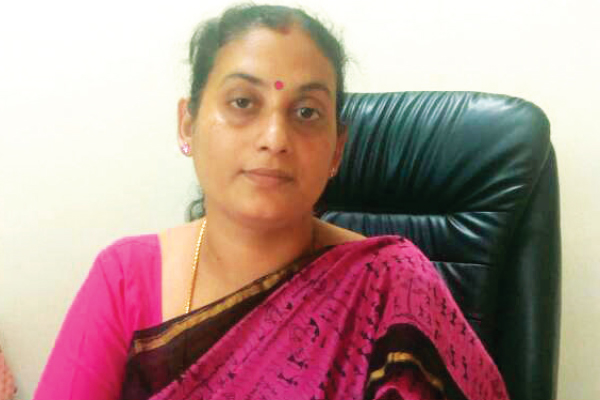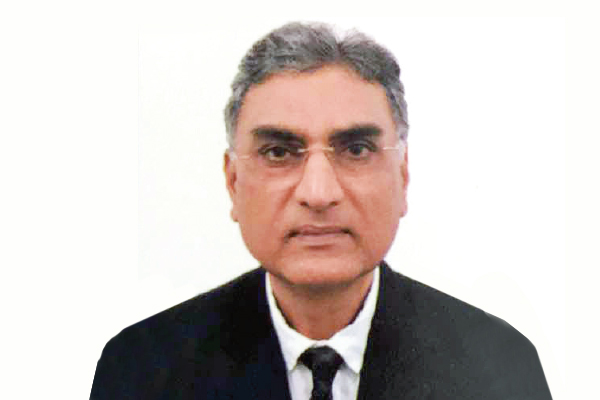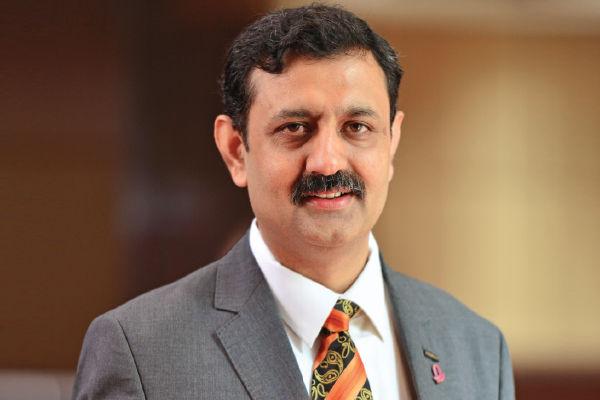
 Established in the year 2000 to look into the demand and supply of medicinal plants, policy making and conservation, the National Medicinal Plants Board under the Ministry of AYUSH has been playing a leading role in making India a global hub for traditional medicines by ensuring sustainable, quality and optimum quantity supply of the raw material to the burgeoning AYUSH industry, says Padmapriya Balakrishnan, Deputy Chief utive Officer, National Medicinal Plants Board, in conversation with Gautam Debroy of Elets News Network (ENN).
Established in the year 2000 to look into the demand and supply of medicinal plants, policy making and conservation, the National Medicinal Plants Board under the Ministry of AYUSH has been playing a leading role in making India a global hub for traditional medicines by ensuring sustainable, quality and optimum quantity supply of the raw material to the burgeoning AYUSH industry, says Padmapriya Balakrishnan, Deputy Chief utive Officer, National Medicinal Plants Board, in conversation with Gautam Debroy of Elets News Network (ENN).
What are the key objectives of the National Medicinal Plants Board?
The main purpose of the National Medicinal Plants Board is to look after all the issues related to medicinal plants in the country. The board was set up under the Ministry of AYUSH (Ayurveda, Unani, Siddha and Homeopathy) with the objective to ensure that there is a sustainable, quality and optimum quantity supply of the raw material to the AYUSH industry. The board was set up in the year 2000 to look into the demand and supply of the medicinal plants, policy making and conservation of the medicinal plants, which are available in wild conditions. We also support cultivation of medicinal plants by offering subsidy to farmers with forward as well as backward linkages. We also undertake research activities related to the medicinal plants.

With the government laying stress on AYUSH, what kind of promotional activities have you undertaken to increase popularity of medicinal plants in the country?
Medicinal plants have been used in the treatment of many diseases since time immemorial. Even in modern medicine, we do not have cure for many of the illnesses like cancer or diabetes. Medicinal plants can be used effectively to cure lifestyle diseases. Therefore, people need to be made aware about what kind of medicinal plants they can use in their day to day life to keep away many diseases. We have been doing promotional activities through seminars, workshops and training. Under the advice of Prime Ministers Office, we started a 365 day campaign throughout the country in August last year. It includes special campaigns, seminars, workshops, trainings, etc.
How do you encourage states to promote medicinal plants? We have two schemes through which we promote medicinal plants. The first one is the central sector scheme and the second one is related to the cultivation of medicinal plants as a component under the National AYUSH Mission. Under the central sector scheme, we allocate projects for conservation of medicinal plants and research and development. We also provide funds to organise various activities at the state level to promote medicinal plants. We offer fund to state governments, research organisations, departments of the state government and NGOs to promote medicinal plants.
For cultivation of medicinal plants, we give subsidy to farmers. We have provided around 140 new species which are highly in demand and need to be cultivated on a large scale. We also give funds for nursery, marketing linkages, processing, storage, etc.

How do you ensure protection of endangered species of medicinal plants?
There are 60 to 70 red-listed species of medicinal plants. These fall under the rare, endangered or threatened categories of species. To ensure that they are protected, we undertake surveys and create a 200-hectare of MPC (medicinal plant conservation) reserve inside the forest area. That particular patch of land will have high potential of medicinal plant diversity. For many species under extinction, we also promote tissue culture and propagate them on a large scale. We augment them in the forest area by carrying out plantation activities so that instead of one or two species we have more number of plants of that species in the forest.
Since the Northeast India has huge potential for medicinal plants, is there any specific focus on this region to promote the same?
Around 10 per cent of our budget is dedicated for northeast. We spend specifically in northeast and also allocate funds over and above the budget for northeast. In partnership with the Ministry of Development of North Eastern Region, we have organised conferences and workshops to explore the potential of the northeast region. A lot of medicinal plants are naturally available in Northeast India and are being exploited in unsustainable way. So, we have to ensure that plants are exploited in a sustainable manner and people living in and around forest areas should be benefitted. Therefore, we have asked our state medicinal plant boards in the region to send us suitable project proposals that focus on livelihood of the people and ensure that the rich resources of Northeast India are utilised for the betterment of the people.
What kind of challenges you face?
In medicinal plants, there are many challenges because medicinal plants in itself is a big subject. There are 42,000 plant species available in our country of which 9,000 have medicinal value. When we assess the demand and supply, we find that there are more than 1,000 species that are being traded, of which more than 200 are traded in large quantities. Managing all these varieties is no mean task. Currently, the supply is majorly coming from forest areas. However, with the advent of Forest Dwellers Act [Scheduled Tribes and Other Traditional Forest Dwellers (Recognition of Forest Rights) Act, 2006], it has become difficult to control the produce that is being extracted from forests by the locals. Besides, we have also lost the opportunity to document that how much is being extracted from the forest.
On the cultivation side, marketing, availability of quality planting material and grey market of medicinal plants pose a challenge. There are many varieties available to farmers, but since the market price of some of the species is very high majority of the farmers often cultivate only those species and then suddenly the prices of those species come crashing down.
There are many red species that are governed by various laws and regulations and their extraction is considered a crime. So, because of those particular species medicinal plants are secretly traded. We are trying to overcome these challenges.
What potential do you see for AYUSH medicines in the current scenario?
AYUSH medicines have immense potential. The Central Council for Research in Ayurvedic Sciences (CCRAS) has recently come up with many prescriptions for diabetes, migrane, etc. It is part of our rich tradition that we need to reinvent. AYUSH medicines have been documented 5,000 years back. But for making people to accept the traditional healing techniques we need to conduct clinical trials to prove their efficacy.
Be a part of Elets Collaborative Initiatives. Join Us for Upcoming Events and explore business opportunities. Like us on Facebook , connect with us on LinkedIn and follow us on Twitter , Instagram.












